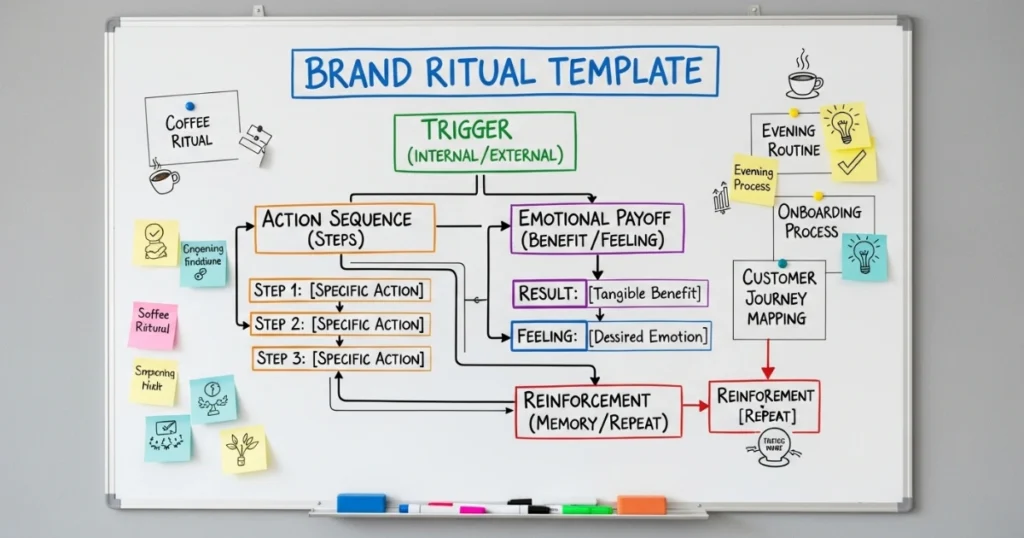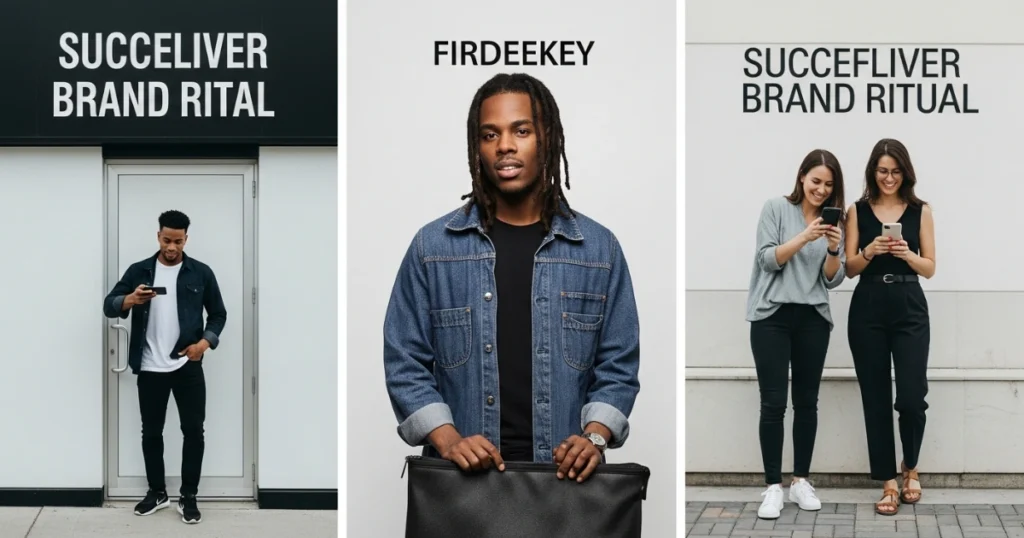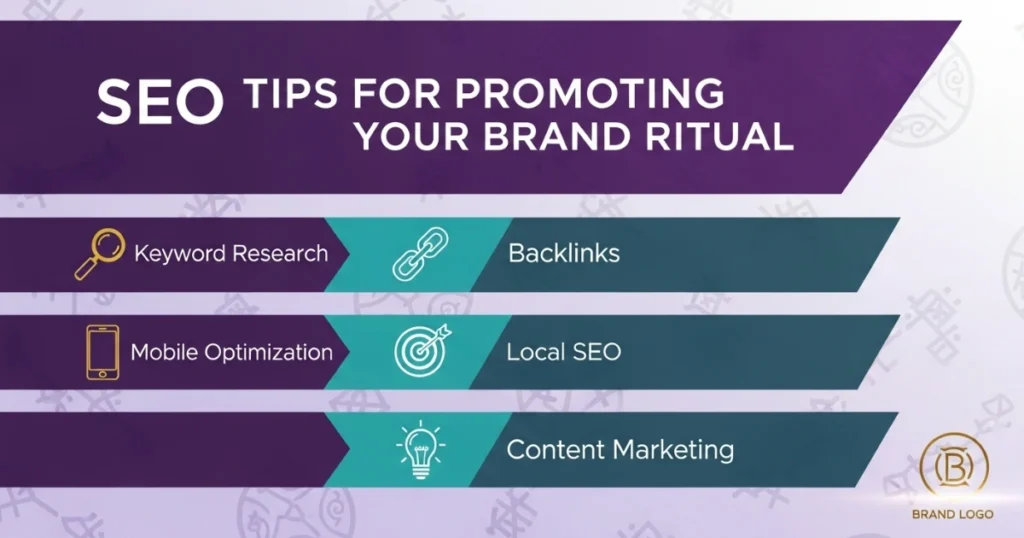
AI Content Creation
Brand Ritual Template: Boost Engagement & Loyalty

Contents
A brand ritual template serves as a powerful tool to forge lasting emotional connections between a brand and its audience. In today’s competitive market, where consumers are bombarded with choices, creating memorable experiences is key to standing out. By incorporating intentional, repeatable actions—brand rituals—businesses can foster loyalty, enhance engagement, and build a community around their brand. This article explores the concept of a brand ritual template, why it matters, and how to craft one effectively to maximize its impact. With practical steps, real-world examples, and actionable insights, you’ll learn how to create rituals that resonate with your audience and drive long-term success.
What Is a Brand Ritual?
A brand ritual is a purposeful, repeatable action or experience that a brand designs to engage its customers emotionally. Unlike one-off marketing campaigns, rituals are consistent, meaningful, and tied to a brand’s identity. For instance, think of Starbucks’ personalized cup-writing tradition or Nike’s encouragement of daily fitness challenges through its app. These rituals create a sense of belonging and make customers feel valued.
A brand ritual template is a structured framework that helps businesses design these rituals. It outlines the steps, emotions, and outcomes you want to achieve, ensuring the ritual aligns with your brand’s values and goals. By using a template, you can create rituals that are scalable, repeatable, and impactful.
Why Are Brand Rituals Important?
Brand rituals matter because they:
- Build Emotional Connections: Rituals tap into customers’ emotions, creating a deeper bond with the brand.
- Enhance Customer Loyalty: Consistent rituals make customers feel part of a community, increasing retention.
- Differentiate Your Brand: In a crowded market, unique rituals set you apart from competitors.
- Drive Engagement: Rituals encourage customers to interact with your brand regularly, boosting visibility and advocacy.
The Anatomy of a Brand Ritual Template
To create an effective brand ritual, you need a clear template. A well-designed brand ritual template includes several key components. Below, we break down each element and explain how to implement it.

1. Define Your Brand’s Core Values
First, identify the values that define your brand. These values will serve as the foundation for your ritual. For example, if your brand prioritizes sustainability, your ritual might involve eco-friendly practices or community clean-up events.
Action Steps:
- List your brand’s top three to five core values (e.g., authenticity, innovation, community).
- Ask: How can a ritual reflect these values in a way that resonates with your audience?
- Ensure the ritual aligns with your brand’s mission and vision.
Example: Patagonia, an outdoor clothing brand, emphasizes environmental responsibility. Their “Worn Wear” program encourages customers to repair and recycle clothing, reinforcing their sustainability values.
2. Understand Your Audience
Next, analyze your target audience. A successful brand ritual speaks directly to their needs, desires, and behaviors. Understanding your audience ensures your ritual feels authentic and relevant.
Action Steps:
- Conduct audience research using surveys, social media analytics, or customer feedback.
- Identify pain points, motivations, and preferences.
- Segment your audience to tailor rituals for specific groups, if necessary.
Example: Lululemon’s yoga classes and community events cater to their health-conscious audience, creating a ritual of wellness and connection.
3. Choose a Ritual Type
Brand rituals can take many forms, from physical actions to digital experiences. Choose a type that suits your brand and audience. Common types include:
- Product-Based Rituals: Actions tied to using your product, like a skincare brand encouraging a nightly routine.
- Community-Based Rituals: Events or activities that bring customers together, such as annual brand celebrations.
- Digital Rituals: Online challenges, hashtags, or app-based interactions, like fitness tracking.
- Service-Based Rituals: Personalized customer service practices, such as handwritten thank-you notes.
Action Steps:
- Brainstorm ritual ideas that align with your brand and audience.
- Consider the frequency (daily, weekly, annually) and scalability of the ritual.
- Test small-scale rituals to gauge customer response.
Example: Coca-Cola’s “Share a Coke” campaign, where personalized bottles encouraged customers to share drinks with friends, became a global ritual.
4. Create Emotional Resonance
For a ritual to stick, it must evoke emotions. Whether it’s joy, nostalgia, or a sense of achievement, the emotional payoff keeps customers coming back.
Action Steps:
- Map out the emotions you want to evoke (e.g., excitement, trust, belonging).
- Design the ritual to trigger these emotions through storytelling, visuals, or sensory experiences.
- Use customer feedback to refine the emotional impact.
Example: Apple’s product launch events create anticipation and excitement, turning the unboxing of a new device into a ritual for tech enthusiasts.
5. Make It Repeatable and Scalable
A true ritual is repeatable without losing its charm. It should be easy for customers to participate in and adaptable to different contexts.
Action Steps:
- Simplify the ritual to ensure accessibility (e.g., minimal time or resource commitment).
- Create clear instructions or prompts to encourage participation.
- Plan how the ritual can scale as your brand grows.
Example: Starbucks’ practice of writing names on cups is simple, repeatable, and works across thousands of locations worldwide.
6. Measure Success and Iterate
Finally, track the ritual’s impact and refine it based on data. Metrics like customer retention, engagement rates, and social media mentions can indicate success.
Action Steps:
- Set clear KPIs (Key Performance Indicators) for the ritual, such as participation rates or repeat purchases.
- Use analytics tools to monitor performance.
- Gather customer feedback to improve the ritual over time.
Example: Nike’s running app tracks user progress, encouraging daily runs and providing data to refine their fitness ritual.
How to Implement a Brand Ritual Template
Now that you understand the components, let’s dive into a step-by-step guide to implementing a brand ritual template. This process ensures your ritual is strategic, impactful, and aligned with your goals.

Step 1: Conduct a Brand Audit
Start by assessing your brand’s current position. What makes you unique? What do customers love about you? A brand audit helps you identify opportunities for rituals that feel authentic.
Checklist:
- Review your brand’s mission, vision, and values.
- Analyze customer reviews and social media sentiment.
- Identify gaps where a ritual could enhance the customer experience.
Step 2: Brainstorm Ritual Ideas
Gather your team for a brainstorming session. Focus on ideas that align with your brand values and audience preferences. Use the ritual types (product-based, community-based, etc.) as a starting point.
Tips:
- Encourage creative, out-of-the-box ideas.
- Prioritize rituals that are easy to execute and memorable.
- Consider how the ritual will work across different platforms (e.g., in-store, online).
Step 3: Prototype and Test
Create a small-scale version of the ritual and test it with a segment of your audience. This allows you to gather feedback and make adjustments before a full rollout.
Tips:
- Start with a low-cost, low-risk ritual.
- Use A/B testing to compare different ritual variations.
- Monitor engagement and emotional response.
Step 4: Launch and Promote
Once you’ve refined the ritual, launch it with a strong marketing push. Use storytelling to explain why the ritual matters and how customers can participate.
Promotion Ideas:
- Share the ritual on social media with a branded hashtag.
- Create video tutorials or blog posts to demonstrate the ritual.
- Partner with influencers to amplify reach.
Step 5: Monitor and Optimize
After launching, track the ritual’s performance using your chosen KPIs. Collect customer feedback to identify areas for improvement.
Tools:
- Google Analytics for website engagement.
- Social media analytics for hashtag performance.
- Customer surveys for qualitative insights.
Real-World Examples of Successful Brand Rituals
To inspire your own brand ritual template, let’s look at some brands that have mastered the art of rituals.

1. Starbucks: The Name-on-Cup Ritual
Starbucks’ practice of writing customers’ names on cups personalizes the coffee-buying experience. It’s simple, scalable, and creates a moment of connection between baristas and customers.
Why It Works:
- Personalization fosters a sense of belonging.
- It’s easy to replicate across thousands of stores.
- Customers share their cups on social media, amplifying the ritual.
2. Nike: The Daily Fitness Challenge
Nike’s apps and wearables encourage users to track their daily workouts, turning fitness into a ritual. The brand reinforces this with motivational campaigns and community challenges.
Why It Works:
- Aligns with Nike’s “Just Do It” ethos.
- Leverages technology for scalability.
- Encourages consistent engagement.
3. Glossier: The Skincare Routine
Beauty brand Glossier promotes a nightly skincare routine using its products. By sharing tutorials and customer stories, they’ve turned skincare into a ritual of self-care.
Why It Works:
- Appeals to their audience’s desire for self-expression.
- Simple, repeatable actions drive product usage.
- Community-driven content encourages participation.
Common Mistakes to Avoid
While designing your brand ritual template, watch out for these pitfalls:
- Lack of Authenticity: Rituals that don’t align with your brand’s values feel forced and inauthentic.
- Overcomplication: Complex rituals discourage participation. Keep it simple and accessible.
- Ignoring Feedback: Failing to listen to customers can lead to rituals that miss the mark.
- Inconsistency: Sporadic or poorly executed rituals confuse customers and dilute impact.
SEO Tips for Promoting Your Brand Ritual
To maximize the reach of your brand ritual template, incorporate these SEO strategies:

- Use the Main Keyword Strategically: Include “brand ritual template” in your title, meta description, headers, and throughout the content at a 1% density (approximately 30-35 times for a 3000-3500 word article).
- Incorporate Related Keywords: Use synonyms like “brand engagement strategy,” “customer loyalty ritual,” or “brand experience framework” to enhance relevance.
- Optimize for Readability: Use short paragraphs, bullet points, and subheadings to improve user experience.
- Add Internal and External Links: Link to relevant blog posts on your site and authoritative sources to boost credibility.
- Include Visuals: Add images or infographics of your ritual in action to increase engagement and time on page.
Conclusion
A brand ritual template is a game-changer for businesses looking to build emotional connections, foster loyalty, and stand out in a crowded market. By defining your brand’s values, understanding your audience, and creating repeatable, emotionally resonant rituals, you can transform the customer experience. Whether it’s a simple product-based ritual or a community-driven event, the key is to make it authentic, accessible, and impactful. Start by auditing your brand, brainstorming ideas, and testing small-scale rituals. With consistent effort and optimization, your brand ritual can become a cornerstone of your marketing strategy, driving engagement and loyalty for years to come.


Stormeye Video Engine: Boost Video SEO in 2025
Updated on August 31, 2025
Read More